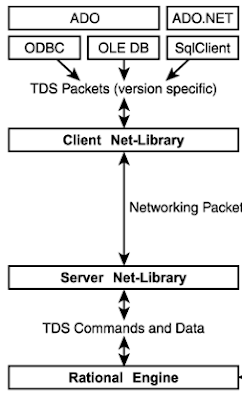SQL Server, MrbMiner the new malware that infects SQL Server!
Hello friends,
Today we will talk about security because it is a recent new that a new malware is trying to infect SQL Server. Its name is MrbMiner.
The goal is always the same: installing a Cryptominer in order to use the power of the server to mine cryptocurrency!
We have already talked about security here
- https://sqlserverperformace.blogspot.com/2020/03/sql-server-corona-virus-smartworking.html
- https://sqlserverperformace.blogspot.com/2020/04/sql-server-botnet-and-cryptomining-is.html
Enyoj the reading!
The new malware that infects SQL Server has a name, its name MrbMiner.
Its goal is to install on your server a cryptominer.
According to the chinese tech giant Tencent over thousands SQL Server databases have been infected!
How does it work?
This malware spreads exclusively by scanning the internet for SQL servers and performing a brute force attack by repeatedly trying the administrator account with weak passwords.
If the MrbMiner malware gains access to the system, it downloads a file called assm.exe, saving it in C: / Program Files / Microsoft sql server / mssql **. Mssqlserver / mssql / data / sqlmanagement / assm.exe or C: /Windows/temp/slqmanagement/assm.exe
Once executed the assm.exe once does many things..
Contact the mrbfile.zyz server at vihansoft.ir and port 3341 and download the SqlServer.dll file that contains the Trojan in the path http://mrbfile.xyz/sql/SqlServer.dll.
The Trojan is then unzipped and executed.
When executed the program analyzes the configuration of the current machine, counting the number of CPUs it has, and connects them individually to different internal ports to which the Monero Miner connects.
To ensure that it remains hidden during a routine check, a function has been implemented inside it that stops the mining process and cleans the offending files when Task Manager is opened.
To
create a persistence, even if you decide to delete the files directly,
the process downloads two additional installers called
installservice.exe and PowerShellInstaller.exe which in turn download
(if necessary) the Monero Trojan Miner. The logs are also modified and
an entry with the name Windows Host Service is added.
Finally
it adds a backdoor account for future access. The backdoor account has
the username "Default" and a password of "@ fg125kjnhn987".
How to test if you SQL Server is infected?
You should scan our SQL Servers for the presence of the Default/@fg125kjnhn987 backdoor account.
With the T-SQL command below you can test if you have an user called ‘Default’
SELECT
[name],
[type_desc],
is_disabled,
create_date,
modify_date
FROM sys.server_principals
ORDER BY modify_date desc
In case you find a system with this account configured you should call a system administrator or an SQL Server Expert.





Thank you so much for your valuable blog. Can you please guide what's the next step to resole this issue?
ReplyDelete